By John Domagalski
The pilots of Bombing Squadron 6 could not believe what they were seeing on the morning of June 4, 1942. The squadron was about 150 miles northwest of Midway atoll when good visibility allowed the dive-bombers from the aircraft carrier USS Enterprise to make out three Japanese carriers almost 20,000 feet below. The light tan flight decks clearly stood out against the backdrop of the deep blue sea. A fourth carrier stood off in the distance. Most remarkable was the absence of any Japanese Mitsubishi Zero fighter planes. At a time when the squadron expected to be swarmed by Zeros, none were present. Descending to an altitude of 15,000 feet, the airwaves lit up with the voice of Lt. Cmdr. Clarence McClusky. The air group commander gave final orders to his squadron leaders. “Earl Gallaher, you take the carrier on the left and Best, you take the one on the right. Earl, you follow me down.” McClusky immediately banked his Douglas SBD Dauntless dive-bomber sharply to the right. He began a 70-degree dive toward the Japanese ships below and into history. The dive-bombers were not the first American carrier-based planes to attack the enemy flattops. Three squadrons of torpedo planes had already made low-level attacks. The first torpedo squadron to find the carriers had been Torpedo Squadron 8.
Assembling Torpedo Squadron 8
Torpedo Squadron 8 was created in 1941 to become part of an air group for the new carrier USS Hornet. Lt. Cmdr. John C. Waldron was selected to lead the new squadron. A native of Fort Pierre, South Dakota, he was an experienced naval aviator. Graduating from the U.S. Naval Academy in 1924, he joined the fast-growing field of naval aviation, earning his wings in 1927. Waldron immediately set out to organize his squadron.
The squadron’s executive officer, Lieutenant Harold Larsen, became Waldron’s second in command. Waldron told him of the difficult task that lay ahead. “We’re getting fresh, green kids,” he said. “We’ve got to make fighting men out of them and we may not have much time.”
Among the pilots assigned to the squadron was Ensign George Gay. A native Texan with little experience, Gay reported for duty shortly after flight school. Like all members of the new squadron, Gay would soon endure long days of training, both in the classroom and in the air. In the months that followed, Waldron and Larsen molded their group of inexperienced pilots into a functioning squadron.
Torpedo 8 was equipped with the Douglas TBD Devastator, which at the time represented the U.S. Navy’s frontline torpedo plane. Once considered a modern aircraft, the bomber was obsolete by the start of the Pacific War. The combination of light armament and slow approach speed made the Devastator an easy target for both Japanese fighter pilots and antaircraft gunners.
The squadron was slated to be among the first to receive the Devastator’s replacement, the Grumman TBF Avenger. Fresh from the assembly line, the new planes were expected to arrive any day. Waldron hoped that he would not have to go into battle with the old Devastators.
Twenty-one new Avengers arrived in March 1942, just as the squadron was preparing to depart for the Pacific aboard the Hornet. Waldron ordered Larsen to stay behind at Norfolk with a detachment of men to begin training in the new planes. Taking those whom he considered to be his best pilots, Waldron headed west with the Devastators.
The Japanese Combined Fleet Maneuvers Against Midway
Although now in a combat zone, Torpedo 8 did not see any action immediately. In April the squadron accompanied the Hornet on her famous mission to launch Lt. Col. James Doolittle’s air raid on Japan. The planes saw no action on the voyage. Just weeks later, American and Japanese naval forces clashed in the South Pacific. The Battle of the Coral Sea was the first true carrier battle in history, but neither the Hornet nor Torpedo 8 participated in the fight. The squadron would have to wait for June to meet the enemy.
Indications of a major Japanese move eastward toward Midway atoll began to appear before the American naval intelligence community in early 1942. Japanese war planners, particularly Admiral Isoroku Yamamoto, chief of the Combined Fleet, viewed an attack on Midway as a means to achieve the dual goals of extending their defensive perimeter eastward and drawing the American carriers into a decisive naval battle. Located only 1,135 miles from Pearl Harbor, the threat to Midway would compel the U.S. Navy to come out and fight.
Japanese naval planners believed that the Americans would commit major naval units in Midway’s defense once the attack began. To maintain the element of surprise, the Japanese planned a diversionary attack on the Aleutians, a barren archipelago off the western tip of Alaska.
By late May, the Japanese Combined Fleet was moving east with a massive naval armada of over 200 ships. Spearheading the attack was a force containing four large fleet carriers. The flattops were under the command of Vice Admiral Chuichi Nagumo, who had led the attack on Pearl Harbor. The force would approach Midway from the northwest to launch air attacks against the island and lie in wait for American ships to respond. To the west lurked a powerful force of battleships and cruisers, with Yamamoto himself aboard the super battleship Yamato. The actual invasion force, under Admiral Nobutake Kondo, would approach the target island from the southwest.
Owing to the benefit of superior naval intelligence and code breaking, American admirals at Pearl Harbor were able to develop a strategy to defend Midway. The intelligence provided a reasonably accurate assessment of Japanese intentions, force composition, and estimated time of arrival. It was now up to search planes from Midway to deliver the specifics on the approaching Japanese fleet.
Locating the Japanese Fleet
The Hornet and Enterprise, along with accompanying escort ships, weighed anchor from Pearl Harbor late in the morning on May 28 and headed for a rendezvous point northeast of Midway. The urgency of the departure meant that the first group of new Avengers scheduled to arrive from the United States did not appear in time to go to sea with the Hornet. Waldron’s worst fear had been confirmed. His squadron would have to go into battle with the old Devastators. A third carrier, the Yorktown, was operating northeast of Midway by June 1.
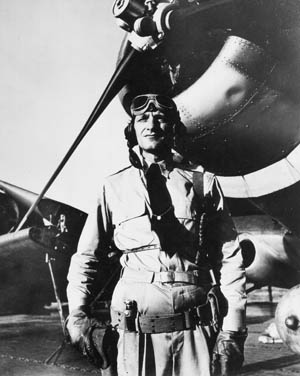
Waldron did his best to get his men ready for battle. He instructed the pilots on tactics and told them what to expect from the Japanese. George Gay recalled the constant training and preparations. “We could almost look at the back of [Commander] Waldron’s head and know what he was thinking, because he had told us so many times over and over just what we should do under all conditions.”
Leading the Hornet’s air group was Commander Stanhope Ring. A Massachusetts native, Ring had graduated from the naval academy in 1923 and earned his wings four years later. However, time spent in administrative positions may have left him lacking the skills needed for the leadership position for an air group. He was not particularly popular with the carrier’s pilots.
Attacks against enemy ships during the impending battle were planned to be well coordinated among the dive-bombers, fighters, and torpedo planes that composed the Hornet’s air group. Ring told his squadron commanders that he planned to keep the planes together to attack the Japanese ships as one large formation, with the bombers coming down from high above while the torpedo planes approached at almost wave-top level. However, he would be keeping the fighter planes at a high altitude close to the dive-bombers in the belief that the upper level planes would be attracting the attention of Japanese fighters.
The arrangement was different from the tactics used by other air groups during the recent Battle of the Coral Sea. In that engagement the fighters were divided to provide cover for both the bombers and torpedo planes.
Waldron vehemently disagreed with the plan and argued that his torpedo planes needed some fighter protection in order to successfully press home an attack. He had hoped to follow the Coral Sea tactics. On the eve of the battle, the issue was not clearly resolved. It would not be long before Torpedo 8 would confront the enemy.
During the morning hours of June 3, a long- range PBY Catalina flying boat on patrol sighted the approaching Japanese invasion force almost 700 miles southwest of Midway. Heavy bombers flying from Midway attacked the transports later in the day but scored no hits. That night a foursome of torpedo-equipped PBYs conducted an attack on the invasion fleet, damaging one ship. No carrier planes participated in the actions.
It would not be until the early morning of June 4 that the Japanese carrier force was located. At 5:30 am, a search plane spotted the carrier force about 200 miles northwest of Midway and radioed a contact report. The Japanese had already launched a large formation of planes to attack Midway. A second search plane spotted the airborne attackers and provided a warning.
“We Will Strike, Regardless of the Consequences”
In the Hornet’s ready room, the men of Torpedo 8 were up early to prepare for battle. Settling down into their comfortable chairs for briefings, the pilots found a memo from Lt. Cmdr. Waldron. His message concluded: “My greatest hope is that we encounter a favorable tactical situation, but if we don’t, and the worst comes to the worst, I want each of us to do his utmost to destroy our enemies. If there is only one plane left to make a final run-in, I want that man to go in and get a hit. May God be with us all. Good luck, happy landings and give ’em hell.”
The men went about their preflight routine of reviewing charts, maps, and data as officers provided them with the most up-to-date information on the forming battle. The teletype machine soon came to life bringing word that some Japanese ships had been located. However, there was no confirmation on the enemy carriers. Then came a report that enemy planes were en route to attack Midway.
Finally, information came that the Japanese carriers had been sighted 180 miles northwest of Midway. An estimated future position for the enemy carriers was soon established on the basis of reported location, course, and speed. The squadron leaders used the information to plan an attack route.
“This is it,” Waldron told his men. Speaking of the impending battle, he continued, “It will be a historical and, I hope, a glorious event.”
The loudspeaker soon crackled, “Pilots man your planes.”
Before heading out, Waldron told his pilots, “We will strike, regardless of the consequences.” He also intimated that he could be changing course mid-flight. “Just follow me and we’ll get there,” he added.
All of the squadron commanders were then ordered to report to the bridge. The hastily assembled meeting was held under the direction of the Hornet’s commanding officer, Admiral Marc Mitscher. The leaders of the dive- bomber and fighter squadrons were in attendance along with Ring, Waldron, and other officers. The gathering represented Waldron’s last opportunity to garner some fighter protection for the flight. The leader of the fighter squadron, Pat Mitchell, agreed with Waldron. He tried to convince Mitscher to let some fighters cover the torpedo planes but he was not successful. The fighters would be staying up high with the dive-bombers.
With the fighter issue settled, Ring told his commanders that he was planning to fly westward to locate the Japanese carriers. Waldron voiced his disagreement and proposed an alternate course taking into account that the Japanese ships might have turned north. The heated argument was settled when Mitscher directed all of the squadron commanders to follow Ring’s course. En route to his plane, Waldron dropped into the charthouse to say goodbye to the Hornet’s navigator, “I’ll take them in. You can count on us.”
“Fifteen Enemy Planes are Heading Toward You”
The first planes to launch were the Hornet’s dive-bombers at 7:02 am. Soon it was time for the 15 torpedo planes to take flight. For some of Torpedo 8’s pilots, it was the first time flying with a live torpedo. Within half an hour, the attack group of 35 dive-bombers, 15 torpedo planes, and 10 fighters was heading out to find the Japanese carriers. Strike groups were also launched from the nearby Enterprise and Yorktown.
As the air group left the carrier, the torpedo planes stayed low while the faster bombers and fighters gained altitude. Early in the flight Waldron broke radio silence to continue his argument with Ring about the course to the Japanese carriers. A short time later Waldron turned his torpedo planes away from the rest of the air group. Before long the torpedo squadron was alone, separated from the rest of the air group in which it was to make a coordinated attack.
The Devastators flew in two divisions, the first of which contained four sections of two planes each. The second division had two sections of two planes and one section of three. Waldron took the lead, while Ensign Gay flew in the last position of the second division.
An hour into the flight a plane suddenly appeared behind the squadron. Waldron’s voice quickly came across the airwaves, “There’s a fighter on your tail.” The plane did not close on the torpedo bombers. It was a Japanese search plane from the cruiser Tone. The scout sent a radio message back to the carrier force, “Fifteen enemy planes are heading toward you.”
Looking for Carriers
While the American planes were heading toward the projected position of the enemy carriers, a Japanese search plane sighted the Yorktown. Shortly after 9 am, Nagumo’s carrier force changed course to the northeast. The Japanese admiral was making preparations to attack the Yorktown. As a result, the Japanese ships would not be at the position expected by the American fliers. Waldron had guessed right.
As the search continued for the Japanese carriers, Waldron decided to change formations. The squadron shifted into a long scouting line, an arrangement that allowed a wider field of vision for searching but left the torpedo planes spread out. Almost an hour later, at about 9:25 am, smoke was sighted on the horizon.
With good visibility, the pilots were able to identify three enemy carriers surrounded by a strong escort of cruisers and destroyers. Waldron had taken his squadron directly to the Japanese carriers. George Gay spotted one carrier that appeared to be on fire. While the Japanese ships had been attacked by land-based planes from Midway earlier in the morning, no carriers were hit and none were damaged at that time. Among the attackers were six of Torpedo Squadron 8’s new Avengers that had just arrived at Midway from the mainland via Pearl Harbor.
Upon sighting the carriers Waldron immediately radioed the enemy’s position and called desperately for the other squadrons from the Hornet. “Stanhope from Johnny One… Requesting coordination time… Stanhope from Johnny One!” However, the remaining squadrons were nowhere near, having already turned south. Torpedo 8 was the only squadron from the Hornet that would find the Japanese on this morning.
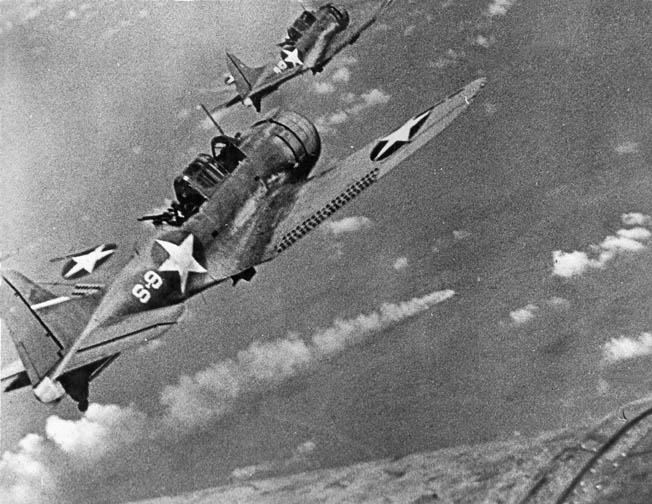
The Attack Run
The message was possibly picked up by a PBY, but there was no reply and there is no record of it being received by any of the other attack squadrons. The torpedo planes would soon be attracting the attention of Japanese fighters. Waldron now had to make a critical decision—strike immediately unescorted, or wait for other squadrons to arrive to make a coordinated attack. He decided to attack and wiggled his wings to signal his decision to the rest of the group. The squadron immediately joined up in attack formation and dropped to 60 feet. Moving the planes close together allowed for concentrated fire from the rear guns.
Approaching the carriers from the east, Waldron headed for the southernmost flattop. Noticing strong antiaircraft fire some distance ahead, he switched to the centrally located carrier. The target was about 16,000 yards away when Japanese fighters suddenly appeared. As many as 30 Zeros swarmed at the torpedo planes from above and behind. One Devastator on the left side of the formation immediately went down in flames.
Waldron was overheard on the radio asking his rear gunner, Horace Dobbs, if it was a torpedo plane or fighter that went down. A radioman in another plane miles away picked up Waldron’s faint words as the battle ensued, his radio microphone apparently stuck open. “Watch those fighters! … My two wingmen are going into the water….”
Waldron’s plane was hit shortly afterward and began to head toward the ocean with the left fuel tank ruptured and on fire. George Gay’s rear gunner, Bob Huntington, spoke into his intercom, “Let’s go back and help him, sir.”
But there was no help to give. Waldron was last seen standing up trying to get out of the cockpit as his plane was going down. The plane hit the water, burned briefly, and disappeared beneath the waves.
While the fighters attacked from above and behind, Japanese antiaircraft gunners were also now taking aim at the torpedo planes. Among the screening ships that opened fire were the cruisers Chikuma and Tone. Both ships fired their main batteries, hoping to either score a direct hit or create water splashes to interfere with the approach of the low-flying planes. Six torpedo planes are believed to have made it past the cruisers.
In what seemed to be a matter of only a few minutes, five of the remaining torpedo planes were shot down. George Gay was the only pilot of Torpedo Squadron 8 left to press home the attack. Huntington’s voice soon came across the intercom, “They got me, sir.” A quick look back confirmed to Gay that his rear gunner was dead.
Gay believed that he was approaching the carrier Kaga. Historians have since determined that he actually attacked the Soryu. The target carrier was now making full evasive maneuvers and was in the midst of making a hard turn to starboard. Gay now turned his plane to face the ship’s port bow. Braving heavy antiaircraft fire and as many as five approaching enemy fighters, Gay dropped his torpedo at a range of about 800 yards.
“I dropped the torpedo and was fortunate enough to get away from the antiaircraft fire, although everything was shooting at me,” he later recalled. The Devastator flew directly over the carrier and passed off the ship’s stern as the pilot caught a brief glimpse of planes on deck and antiaircraft gunners feverishly turning their guns to resume fire on his plane. Gay thought he heard the explosion of his torpedo striking the target. However, no Japanese carrier was hit by a torpedo during the morning attack.
Hiding in the Pacific Ocean
The lone Devastator was suddenly rocked by a series of hits as five approaching Zero fighters were in a line taking turns firing on the defenseless torpedo plane. Machine-gun bullets and cannon shells exploded as they hit the plane. One shell, possibly a 20mm, flash burned Gay’s left leg. Almost simultaneously a shell fragment struck his left hand and a bullet hit his upper left arm. With the rudder control and ailerons destroyed, the Devastator was out of control. It pancaked into the ocean about a quarter mile behind the carrier.
Hitting the water caused the hood to slam shut over the cockpit. Gay began to panic. “I couldn’t hardly get it open,” he later said. “That’s when I got scared.” He was able to get out as the plane quickly disappeared below the surface, leaving only the tail briefly exposed.
A small deflated rubber boat, still in its bag, and a black seat cushion floated past. Having heard the stories of Japanese planes machine-gunning downed pilots in life rafts, he decided not to inflate his raft. With a firm grip on the bag, Gay inflated his life jacket and hid under the seat cushion. Meanwhile, on the airwaves above, the Zero flight leader reported, “All 15 enemy torpedo bombers shot down.”
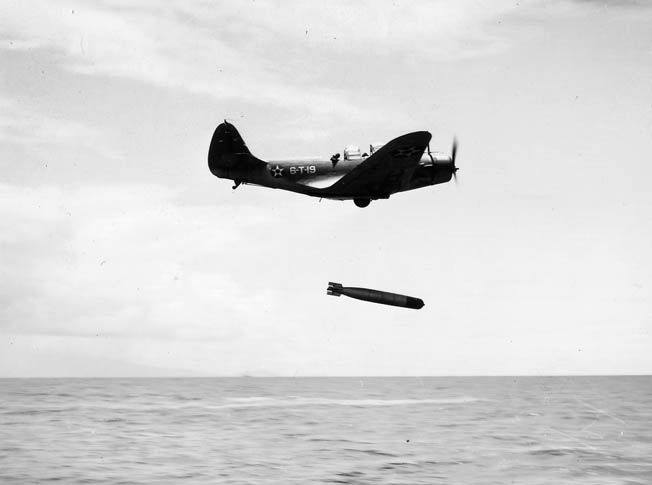
From his view in the water Gay observed the flight operations aboard a nearby carrier that was landing planes. A cruiser also passed nearby but did not seem to notice him. A short time later a second cruiser began to close on his position, but it turned away at the last minute, apparently following a predetermined patrol line. Nursing his wounds, Gay recalled pulling a bullet out of his left arm and putting it in his mouth for safe keeping.
“Maybe I wanted a souvenir,” he later said. “Anyhow, I lost it before long.”
A short time later American dive-bombers suddenly appeared over the fleet and came screaming downward. The carriers immediately began evasive maneuvers, but it was too late. Direct hits caused thunderous explosions and started massive fires on the two carriers that were still within Gay’s view. Both ships burned fiercely and belched smoke as they moved off into the distance. Japanese planes occasionally circled overhead, apparently looking for a place to land. Later a destroyer moved alongside one of the stricken carriers, apparently to take off survivors.
Later in the afternoon a destroyer came closer to Gay’s position than any other ship. He hid behind the seat cushion to escape detection. “If there had been anybody aboard that I knew, I could have recognized them as they went by,” he recalled of the tense moment. The destroyer passed by. As the sun began to set and twilight slowly came over the ocean, Gay cautiously inflated his life raft. “Maybe a little earlier than the wise,” he later said.
“Let’s Get the Hell Out of Here”
During the night the downed pilot was able to observe several glowing areas just over the horizon. These most likely represented the burning hulks of the Japanese carriers and the searchlights of the escort ships. Closer to dawn, in the same general direction, three large explosions were heard in rapid succession. By dawn the ocean was littered with debris. A heavy coat of oil could be seen in some areas. Abandoned black Japanese life rafts, void of any sailors, drifted about. Several hours later a Navy patrol plane on the outbound leg of a search mission from Midway swooped down low to investigate an oil slick and spotted Gay’s bright yellow raft. Acknowledging the sighting, the PBY continued on with the mission but returned during the early afternoon.
The seaplane touched down and pulled near Gay’s raft. The port-side bubble window then slowly opened, and out popped a sailor’s head. “Seen any Jap planes lately?” he asked. When Gay replied that he had not, the sailor continued, “Good. Let’s get the hell out of here.” George Gay was rescued by the seaplane almost 30 hours after being shot down, the sole survivor of 15 Devastator crews of Torpedo Squadron 8.
Heavy Losses for the Torpedo Planes
In the aftermath of Torpedo 8’s heroic attack, two additional torpedo squadrons located the Japanese carriers. Shortly after 9:30 am, Torpedo Squadron 6 from the Enterprise, under the command of Lt. Cmdr. Eugene Lindsey, attacked without fighter cover. At about 10 am. Torpedo Squadron 3 from the Yorktown attacked under the lead of Lt. Cmdr. Lance Massey. His escort group of six Wildcat fighter planes had been overwhelmed by Japanese Zeros.
Like Torpedo 8, these squadrons staged heroic attacks, suffered terrible losses, and scored no hits. Of the 41 torpedo planes that participated in the attacks, only six survived. Like Waldron, squadron commanders Lindsey and Massey were killed in action.
At about 10:20 am, Bombing Squadron 6 and Scouting Squadron 6 arrived from the Enterprise and dove toward the carriers Kaga and Soryu. Almost simultaneously, dive-bombers from the Yorktown attacked the carrier Akagi. Within five minutes all three Japanese carriers were burning as a result of direct bomb hits. The great battle once envisioned by the Japanese had now turned into a decisive American victory.
The importance of the torpedo attacks on the outcome of the battle cannot be underestimated. The brave assaults caused the Japanese fighter cover to be pulled out of position and antiaircraft gunners to focus on the low-level attackers. The evasive maneuvering needed to defend against the torpedo planes may have prevented the Japanese carriers from launching additional fighter planes. All levels of the Japanese air defense network were either out of position or unprepared to meet the subsequent dive bomber attacks.
In his official report on the Midway action, Mitscher praised the efforts of his torpedo squadron. “This squadron is deserving of the highest honors for finding the enemy, pressing home its attack, without fighter protection and without diverting dive bomber attacks to draw the enemy fire.” However, Mitscher’s endorsing of Stanhope Ring’s fighter arrangement and course may have greatly contributed to the demise of the torpedo planes.
In the aftermath of the battle, all 15 of the pilots who participated in the June 4 attack of Torpedo 8 were awarded the Navy Cross. The rear gunners received the Distinguished Flying Cross. On April 5, 1943, President Franklin D. Roosevelt awarded Torpedo Squadron 8 the Presidential Unit Citation. Praising the heroic attack, the citation concluded, “The loss of twenty-nine lives, typifying valor, loyalty, and determination, was the price paid for Torpedo Squadron 8’s vital contribution to the eventual success of our forces in this epic battle of the air.”
Almost 300 people gathered at the Federal shipyard in Kearny, New Jersey, on the morning of March 26, 1944, to witness the launch of a new U.S. Navy destroyer. Shortly after 11:30 am, the USS Waldron slid down the ways and into the Hackensack River. Sponsored by Nancy Waldron, the ship was named in honor of her late father, John. For the next 29 years the warship served with distinction during three wars. It provided a fitting tribute to the memory of a great American hero.
Upon his rescue, George Gay was taken to Midway and was immediately transferred to a Pearl Harbor hospital. His story soon made headlines around the world. He went on to tour the United States as a decorated war hero. Eventually returning to the war zone, Gay was assigned to Torpedo Squadron 11 and flew 21 combat missions from Henderson Field on the island of Guadalcanal in the Solomons. After the war he had a 30-year career in civil aviation flying for Trans World Airlines. George Gay passed away on October 21, 1994. It was 52 years after his 29 comrades had met their heroic fate near Midway.
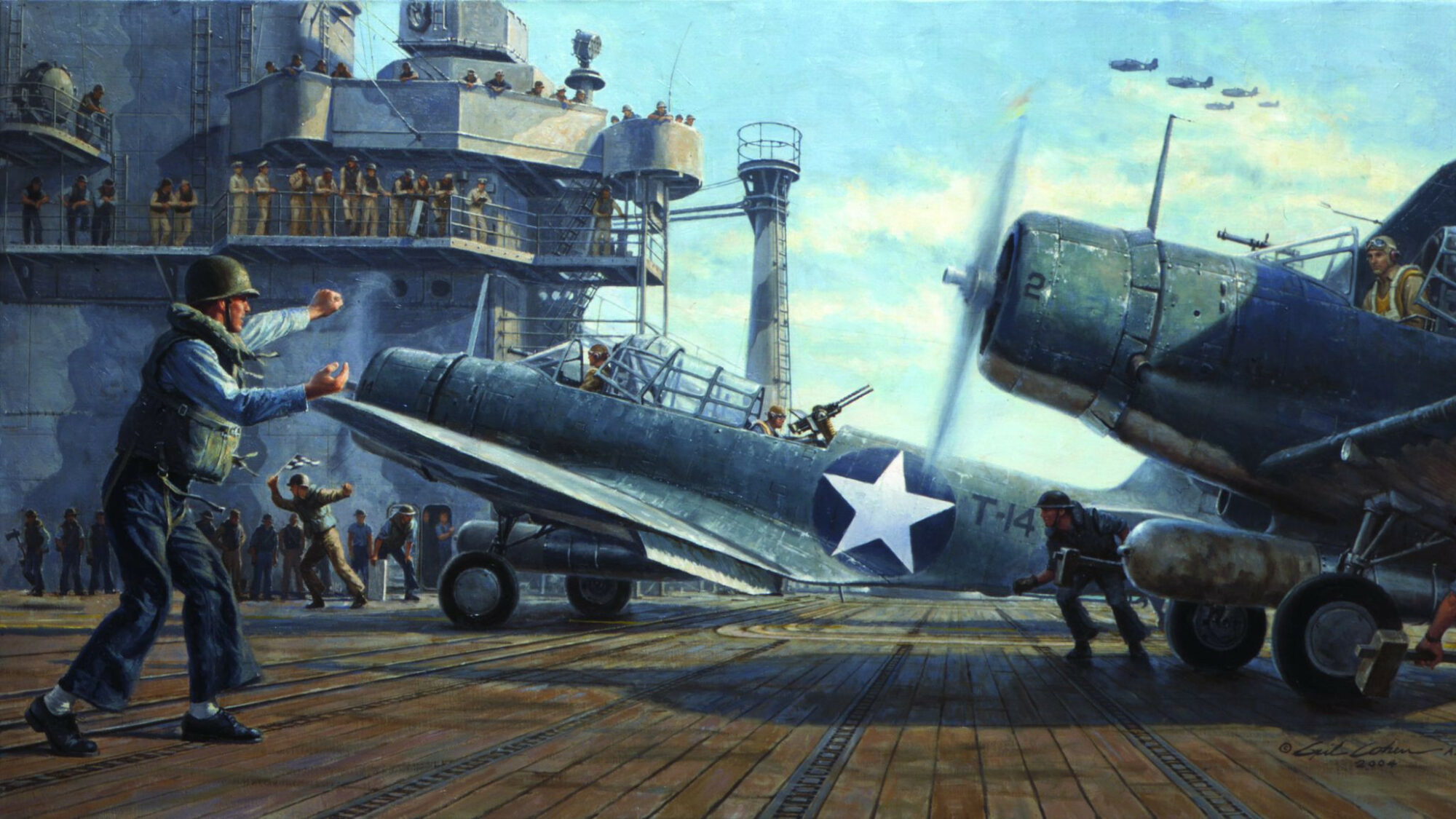
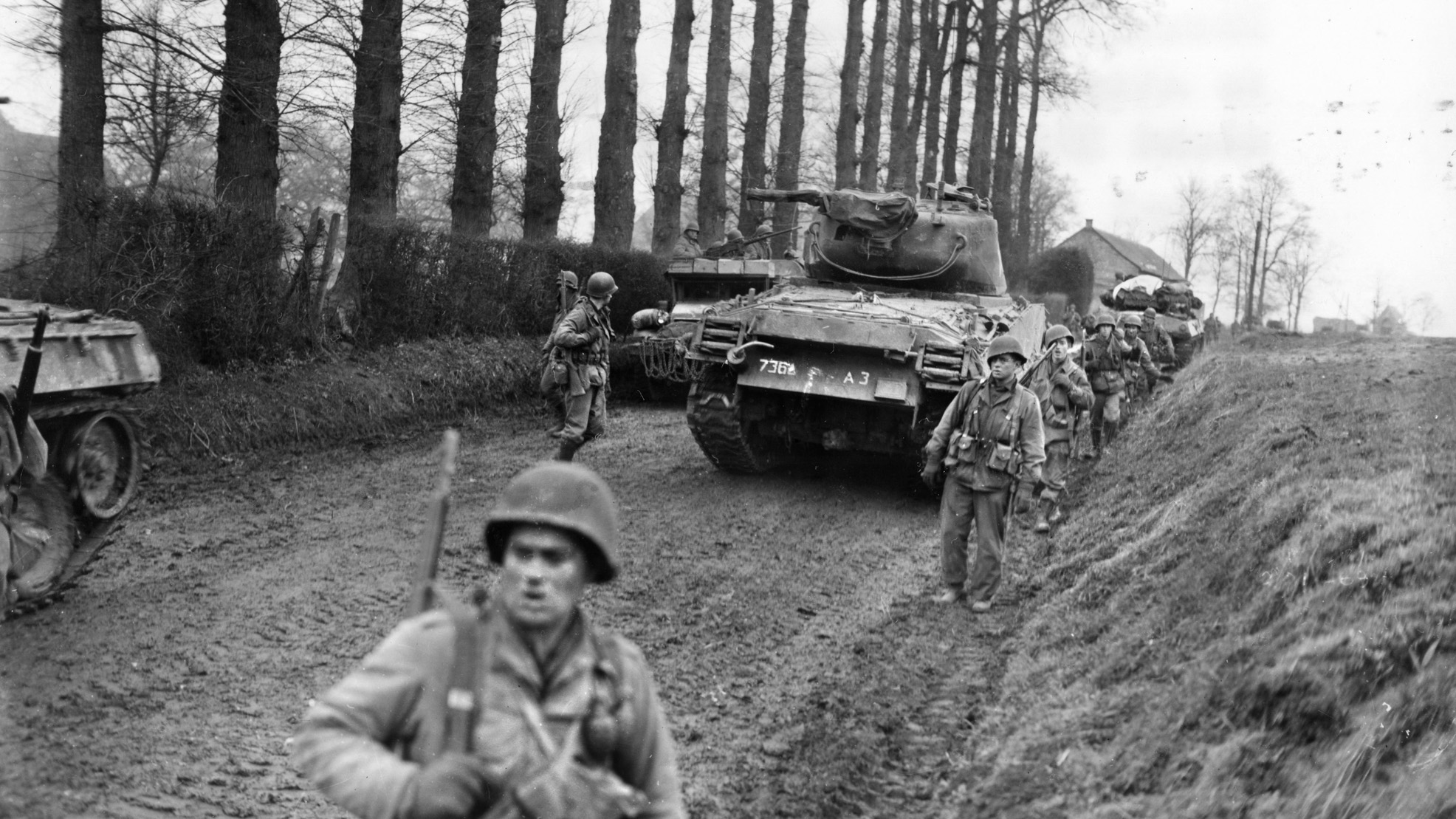
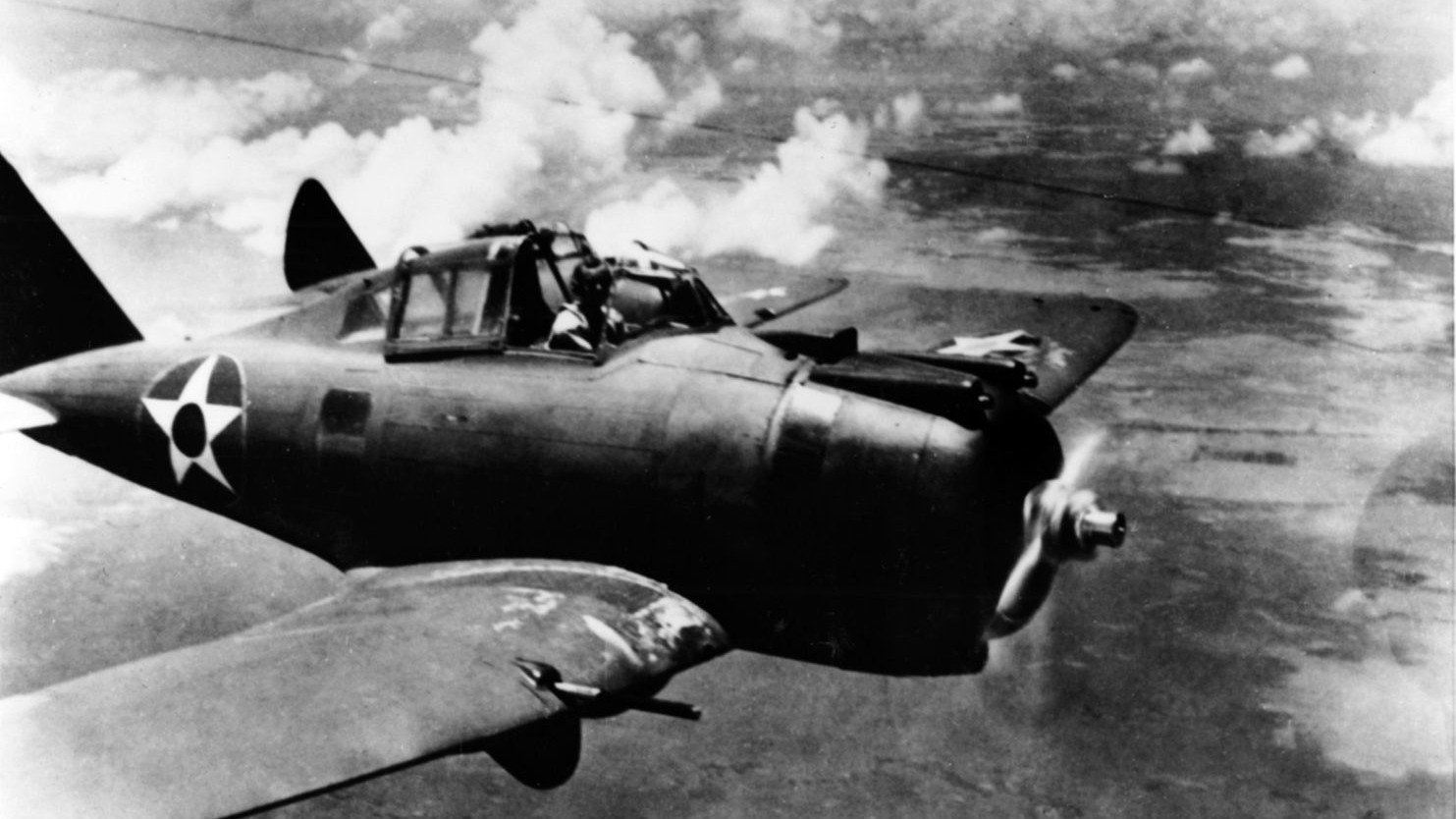
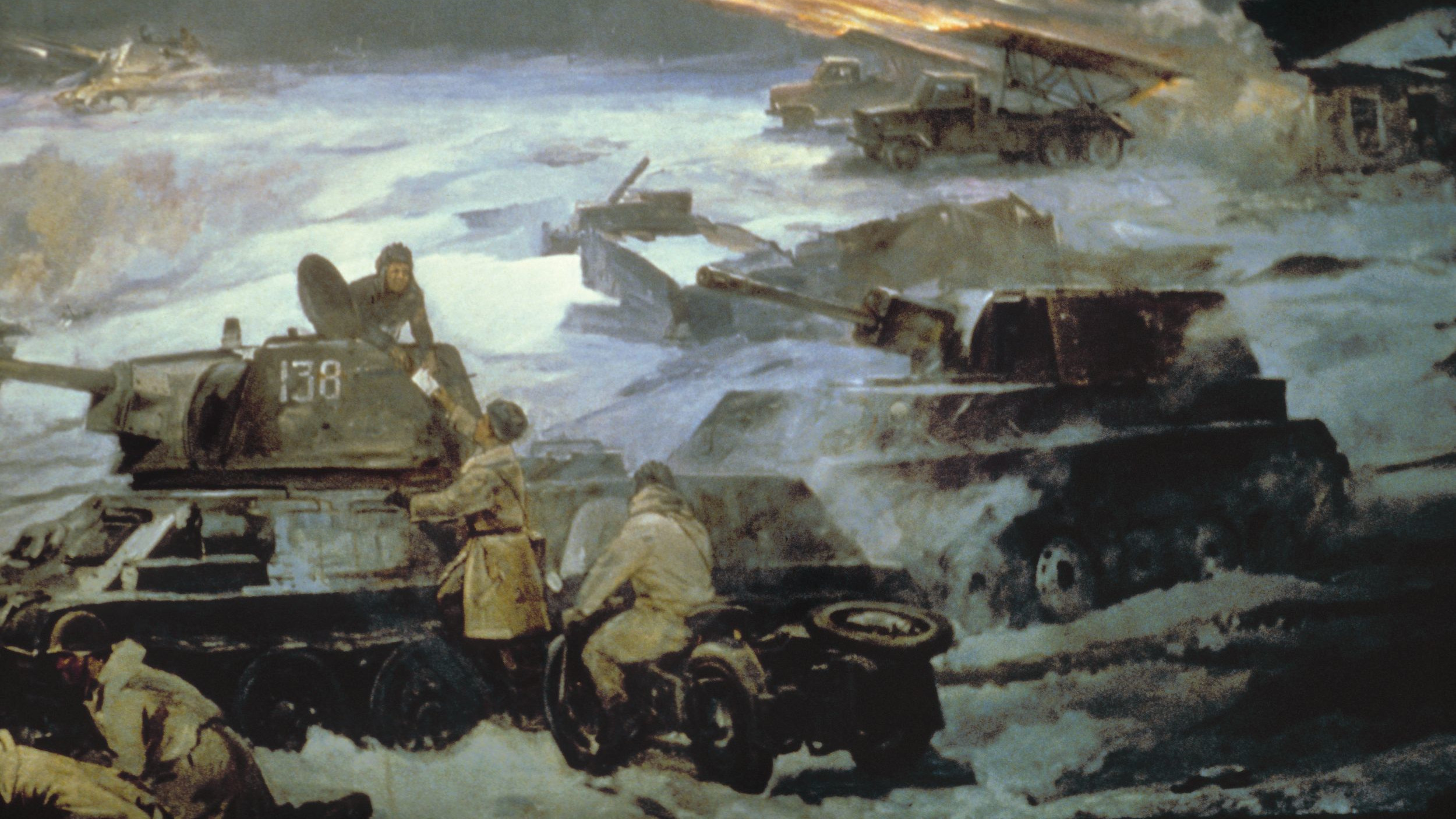
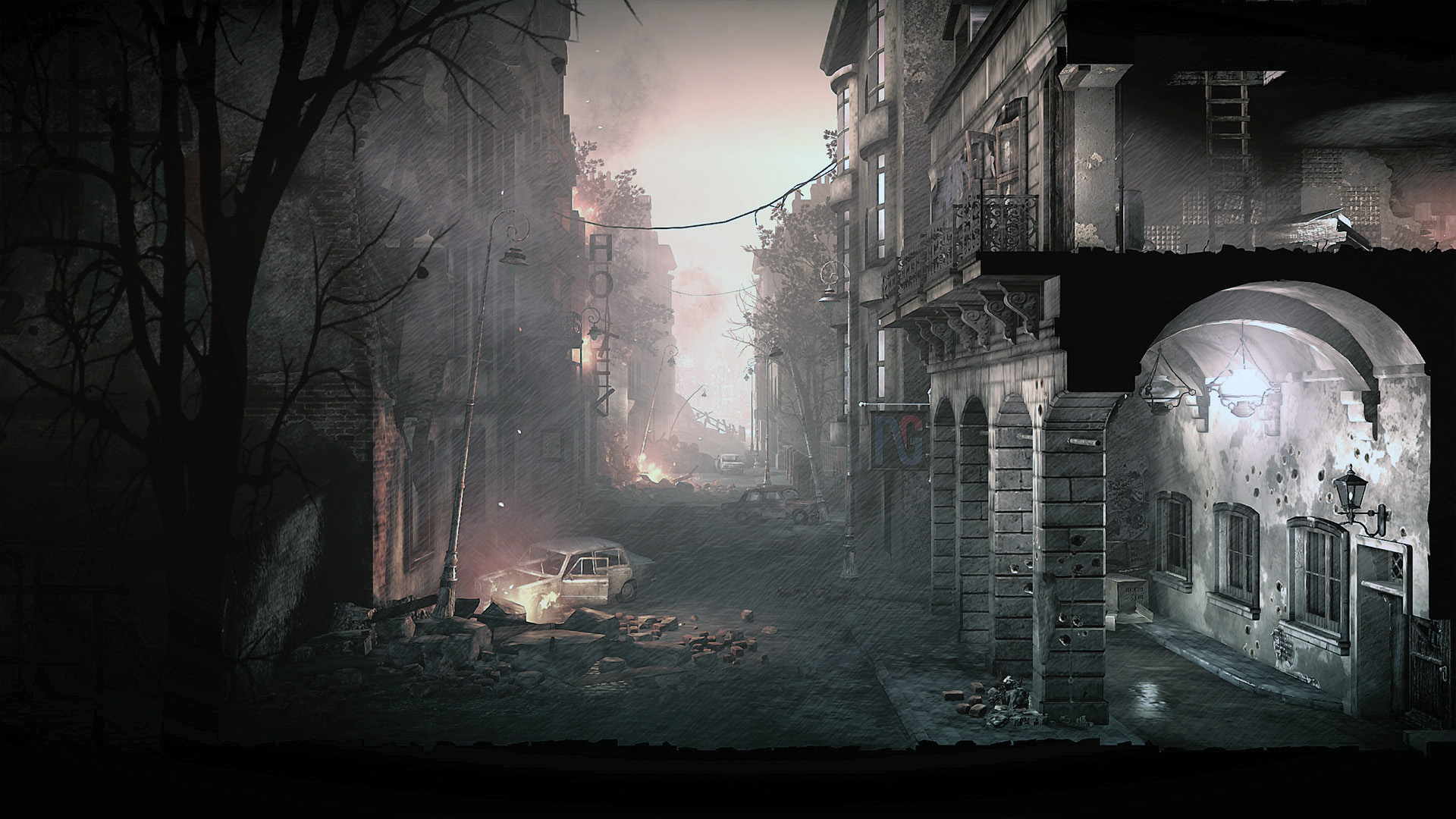
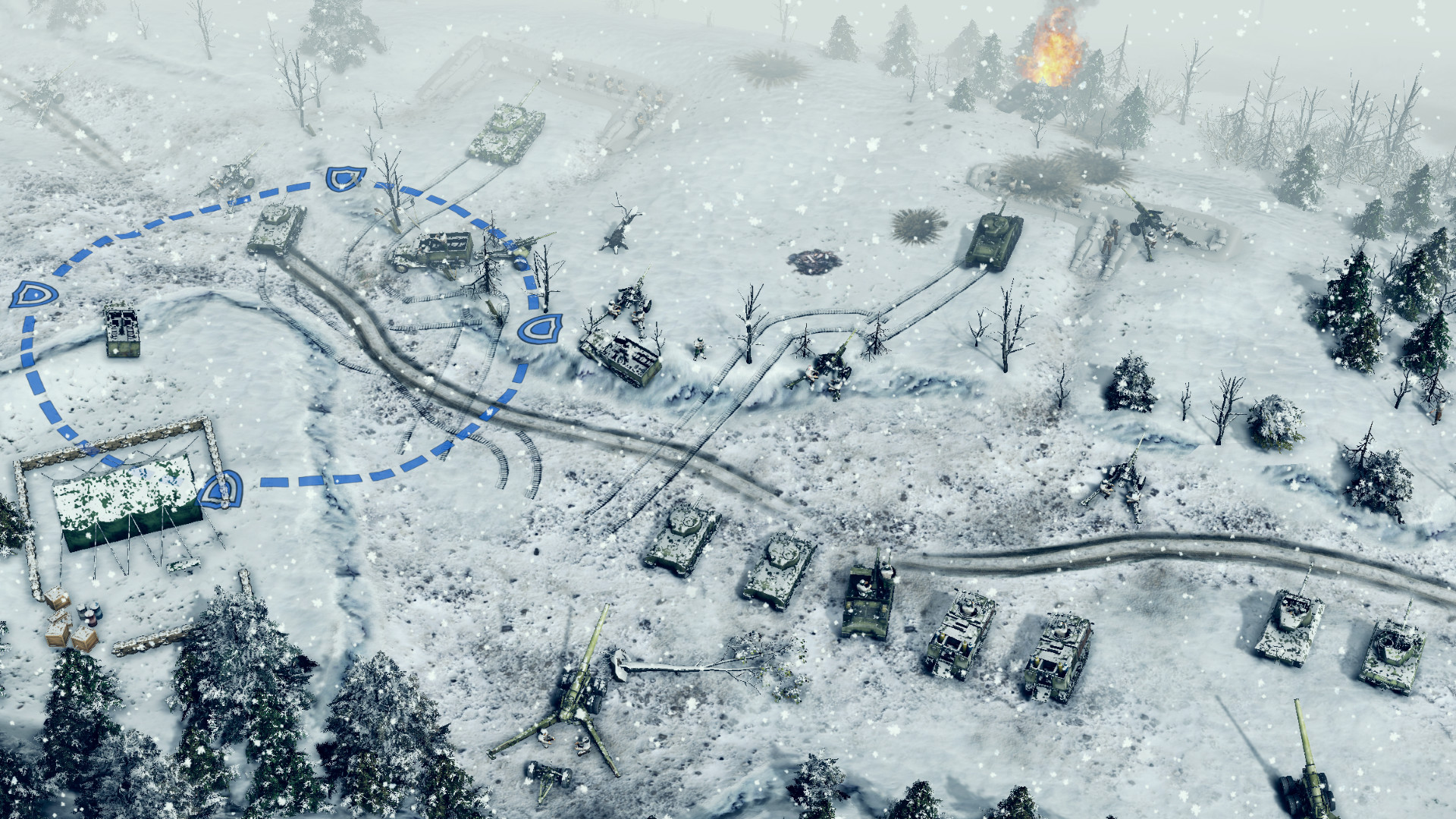
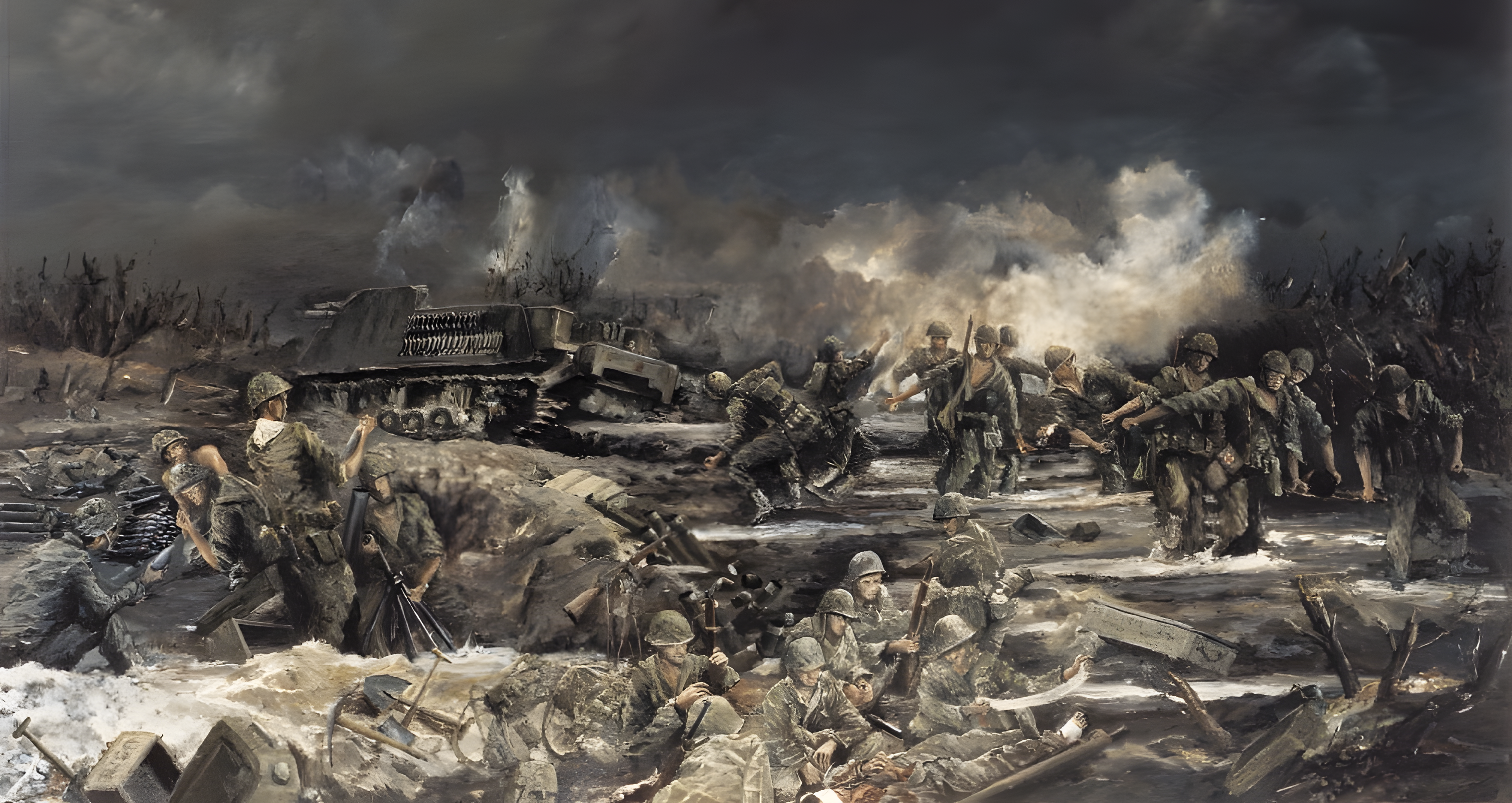
My uncle Lewis Walker was a gunner in Torpedo Squadron #8, He was part of this huge battle at Midway. I read the accounts, very brave seamen and pilots who did there jobs no matter the outcome. My uncle survived, He was a young recruit who aged a lot and grew up fast. I am looking for a blue book given to sailors as they left the ship they were on. He served on the USS Bennington. How do you find one? A great account of Midway, thanks for sharing.
Look here for a 1944 edition of the Bluejackets Manual: https://www.ebay.com/itm/174951474413?hash=item28bbeba4ed:g:R7AAAOSw0S5g-tFN
The Japanese were the best fighters in the world – they downed many US planes with the superior Zero aircraft and only “surrendered” in order to get the US to rebuild their homeland.
The Hardinger comment above i take great issue with. While it’s agreed the Japanese were excellent fighters, to make a statement that they only surrendered so as to have the US rebuild their country is absurd. This is the most idiotic statement re: the Japanese surrender that I’ve ever read. Utterly ridiculous statement that has no factual basis whatsoever.
A bulk of the Japanese Zero force was ultimately destroyed at the battle of Leyte Gulf, in what is called the “Great Marianas Turkey Shoot”. Yes, the Zero was superior to many early American fighters like the Brewster Buffalo, Bell Airacobra, but the P-40s and F4F Wildcats took down their share of Zeros in China and Guadalcanal and the Solomons in 1942-1943 with better aerial tactics (P-40s used high speed diving techniques, while F4Fs used the “Thach Weave”) than the Japanese pilots. Wildcats were more heavily armored and armed than the Zero. By the time the F6F Hellcats arrived, the Wildcats had done their share of knocking down Zeros by a 7 to 1 ratio.
Concerning the Zero vs the F4U, P47D, and P-38 please explain the advantages that made the Zero superior. How did the Japanese know we would rebuild their country and allow them to prosper in the post-war era? Please include sources that can be checked as opposed to just your opinion. Also is that the reason Germany surrendered too? Again please include verifiable sources.
I agree with JW Davis. The Zero was fast in turns because the Japanese sacrificed pilot safety. We weren’t prepared for war because at the time most Americans were isolationist. It took Pearl Harbor to wake them up. Then we were behind and we had to fight like hell but we did overcome our mistakes, which we seem to be making again. But when we did wake up we built superior planes and ships and we kicked ass. Think about what happened? We won! But a lot of people had to die because of our mistakes. Some people don’t get the concept of “peace through Strengthen.” Or as the saying goes, “Some people have to piss on the spark plug to learn that it’ll shock hell out of you.”
Japanese Zeros were better than our early WWII fighters such as the Brewster Buffaloes, the P-36s and Bell Airacobras. P-40s and F4Fs were better against the Zeros, with P-40s heavy armament, armor and diving speed, and F4Fs heavy armament, armor and use of the Thach Weave. F4Fs shot down Zeroes at a 7 to 1 ration before F6F Hellcats were heavily introduced in the Pacific theater.